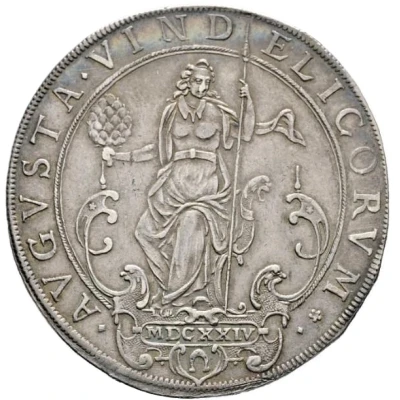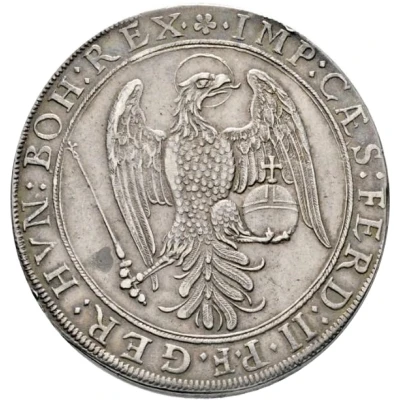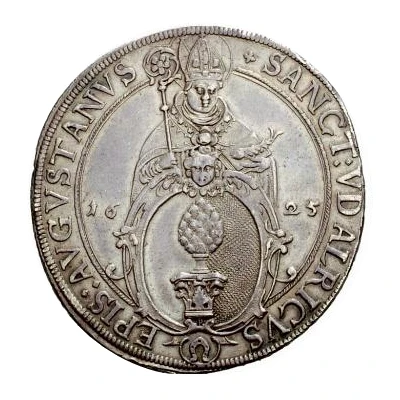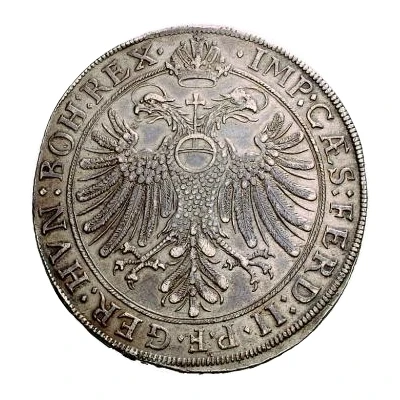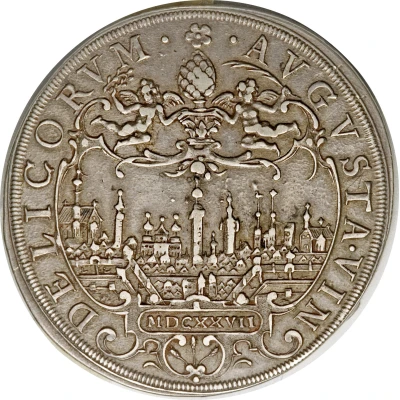
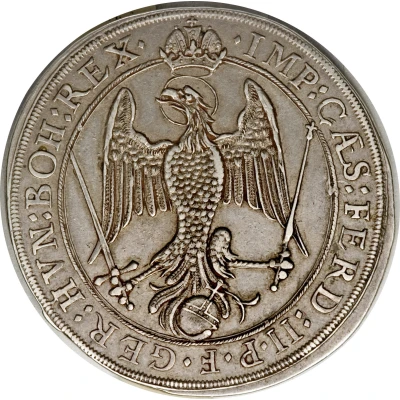

© Heritage Auctions
1 Thaler
| Silver | 29.2 g | 44 mm |
| Issuer | Free city of Augsburg (German States) |
|---|---|
| Period | Free city (1276-1803) |
| Emperor | Ferdinand II (1619-1637) |
| Type | Standard circulation coin |
| Years | 1624-1627 |
| Value | 1 Thaler |
| Currency | Thaler |
| Composition | Silver |
| Weight | 29.2 g |
| Diameter | 44 mm |
| Shape | Round |
| Orientation | Medal alignment ↑↑ |
| Demonetized | Yes |
| Updated | 2024-10-04 |
| Numista | N#31032 |
|---|---|
| Rarity index | 91% |
Reverse
In a circle, a crowned eagle, head to the left, wings spread with a scepter and a sword in its talons and the imperial globe in its tail feathers.
Latin legends in periphery.
Script: Latin
Lettering: ·IMP:CÆS:FERD:II:P·F·GER:HVN:BOH:REX·
Edge
Plain
Comment
Augusta Vindelicorum was the name of Augsburg in ancient Rome.Ferdinand II of Austria (1578-1637) was the son of Charles of Styria, brother of Emperor Maximilian II, and Marie of Bavaria. He succeeded his uncles Rudolf II (1576-1612) and Matthias (1612-1619). He became Holy Roman Emperor in 1619. The Thirty Years' War had just begun, and would ravage the whole of Europe, from Sweden to Spain, from France to Poland. Ferdinand II died before the end of the war. He was succeeded by his son Ferdinand III.
There are many different designs for this type!
Ex: KM 27.2 vintage 1626 Photos: LoskarZ
Interesting fact
The Augsburg Thaler coin from the 17th century has an interesting feature - it has a unique "split-personality" design. On one side, it features the image of the Holy Roman Emperor, Ferdinand II, while on the other side, it features the coat of arms of the Free City of Augsburg. This unusual design was a result of the complex political situation of the time, where the Holy Roman Empire and the Free Cities were trying to assert their power and influence. This coin is a rare and valuable example of this unique historical artifact.
